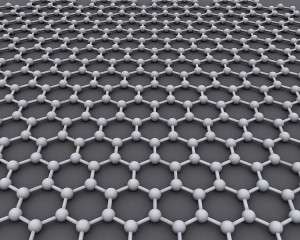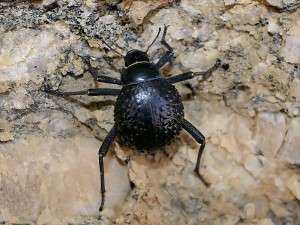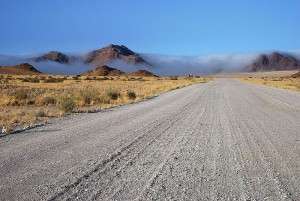Fighting the global water scarcity issue

According to the World Water Management Institute, over one-third of the human population is affected by water scarcity. If nothing is done to prevent it, an estimated 1.8 billion people will be living in countries or regions with absolute water scarcity by 2025. Thankfully, due to bio-mimicry and advancements in physics, water filtration and desalination technologies have been growing and improving.
Graphene is a material possessing a very unique structure and properties, giving it a wide range of implications and uses, such as improved water filtration. Graphene is a one-atom thick sheet of carbon atoms. It is nearly transparent, very light, an excellent conductor of both heat and electricity, hydrophobic, and extremely strong. It is so strong that James Hone, professor of mechanical engineering at Columbia University, claims, "It would take an elephant, balanced on a pencil, to break through a sheet of graphene the thickness of Saran Wrap."
But how can graphene be such a great water filter if it is also hydrophobic? Single-atom-wide holes (called capillaries or defects) are made in the graphene sheet by bombarding it with gallium ions. This allows water to be vigorously sucked through the holes in the material structure. Not everything can fit through these tiny holes and, like a sieve, whatever is too big will be filtered out. University of Manchester researchers discovered that graphene is impermeable to all gases and vapors, except for water; even helium, the hardest gas to separate out, cannot pass through, along with any salts nine Angstroms or larger. This process is most efficient when the water layer being filtered is only one atom thick (the same thickness as graphene), but filtration will still occur when the graphene is submerged in water. Due to graphene's increased permeability – fifty times greater than that of conventional membranes – the filtration is ultrafast and has even been compared to the speed of an ordinary coffee filter. The University of Manchester team's ultimate goal is to "make a filter device that allows a glass of drinkable water made from seawater after a few minutes of hand pumping." A scientific advance like this would have game changing implications for water supply and policy around the world.
Due to its interesting properties, scientists have been trying to create and implement graphene more effectively since its discovery a few years ago. Columbia University engineering researchers have experimentally demonstrated for the first time that it is possible to electrically contact a two-dimensional material like graphene along its one-dimensional edge rather than contacting it from the top, which has been the conventional approach. Through this approach, a new assembly technique has been developed that prevents contamination within layered materials (including layered graphene). Kenneth Shepard, Professor of Electrical Engineering at Columbia University, says that this "novel edge-contact geometry provides more efficient contact than the conventional geometry," opening up possibilities in device applications and fundamental physics exploration.So keep your eyes peeled; smart phones and other portable devices using graphene "could potentially be commercially available within the next 5-10 years." Graphene could also be used for more efficient and economically viable biofuel creation or lithium ion batteries found in electrically powered vehicles.

Scientists are also actively fighting water scarcity by taking inspiration from the creatures that handle it best. The Namibian Beetle (Stenocara gracilipes) is native to the southwest coast of Africa, one of the driest deserts in the world. The Namib Desert is known for its high temperatures, strong winds, and negligible rainfall, although it does experience fogs that move in from the Atlantic Ocean early in the morning and late at night. The Namibian Beetle capitalizes on this windborne dew and gains an average of about twelve percent of its body weight through a technique known as fog-basking. When fog-basking, the beetle points its back at the oncoming breeze carrying the tiny dewdrops and waits. The back of the beetle is hydrophobic, but spotted with small hydrophilic bumps. When the dew-carrying breeze blows by, tiny water droplets are attracted to the hydrophilic bumps and condense, accumulating on the beetle's back.
When the drops grow to a substantial size, the weight of the droplets and the force of the wind exceed the hydrophilic forces and the drops fall down the hydrophobic back, finally sliding into the beetle's mouth. Products like fog nets have been enlisted to help solve human water scarcity, but mimicking the beetle's perfectly efficient biology can help scientists confront the water issue more effectively. The challenge now is to create passive devices to collect water in desiccated environments for local consumption, particularly in poor countries. One example of a bio-mimicry product that seems to take inspiration from the Namibian Beetle is the Dew Bank Bottle. More bio-mimicry in the future, in many scientific fields, could help scientists discover more efficient, natural ways of solving some of our greatest issues.
Advances in physical understanding, its applications, and the study of our environment and bio-mimicry help us develop more effective ways to fight freshwater scarcity around the world. Graphene has proven to be an incredible material with a vast range of unique, useful properties, but taking a step outside the lab to examine how life naturally overcomes different problems can be just as informative. Hopefully, humble creatures like the Namibian Beetle will help usher in a day when the lack of clean drinking water is no longer an issue. In the words of Dr. Irina Grigorieva, "We are not there yet but this is no longer science fiction."

Provided by Columbia University




















